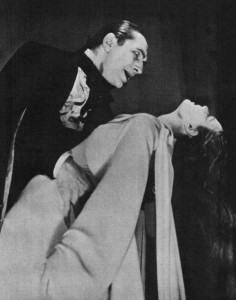
Many of us have experienced the phenomenon of having a dream within a dream. But what does it mean, and why does it happen? There are many theories and different ways the experience can play out. Some involve false awakenings, some also include lucid dreaming, and sometimes we even remember a dream from a previous time while in a current dream (a common one for this dreamer!) Let’s explore some of these variations and the theories behind their possible meanings.
FALSE AWAKENINGS
A false awakening is when we think we wake up from a dream, and we go about doing what we would normally do when we get up, such as brushing our teeth or walking to the kitchen to get breakfast. Sometimes things seem perfectly normal, other times something seems a little ‘off’ due to the dream-like alterations to our waking reality. Especially when things are a little ‘off’, the dreamer may be triggered into lucidity and become aware of the fact that they are dreaming. Other times, a person believes they are waking up, but they really going into yet another false awaking! This can happen multiple times in a row for some people.
If you find yourself unsure of whether you are experiencing a false awakening, or are really awake, try recalling something of a linear nature such as your address. The dreaming mind is non-linear so it will be harder to recall things like numbers. Also check out your surroundings and do some ‘reality checks’ as to the nature of your environment, whether it is the same as in waking or not. Some say if you get out of bed and are not sure if you are in a false awakening, explore your environment and soon you will be able to tell if you are in a dreamscape. Walking into another room can be a good way to test out the landscape for which reality you are in.
While some will categorize a false awakening as a dream within a dream, to me there is a difference. A false awakening is marked by the sense waking up and doing what we would normally do when we get out of bed. A ‘dream within a dream’ can be more complex in terms of potential depth of meaning, as we will explore next.
A DREAM WITHIN A DREAM
There are a number of theories postulated as to why we experience a dream within a dream, and what it might mean. Freud thought that the material in the embedded dream was of a nature that we were not yet ready to face, and so we subconsciously buried, or encapsulated, it within another dream in order to be even less aware of it consciously. To me this does not necessarily make sense as we usually remember both the first and second dream equally. If the content was so disturbing that our mind was trying to ‘hide’ it from us, we would likely not remember it at all.
Though some theorists have agreed with Freud, other have not. His theory has been criticized for dismissing the encapsulating dream and focusing only on the dream within the dream. He also did not take into consideration how the two dreams might be related.
To me this is a much more likely and useful theory that offers more depth of exploration regarding the relationship between the two dreams. It is a much more fascinating approach as well.
HOW THE TWO DREAMS RELATE TO EACH OTHER
This is where it gets interesting. While there is no one set way to look at the relationship between the two dreams, here are some interesting perspectives to take into consideration. If you have a dream within a dream, see if any of these fit for you.
– One dream may outline a problem, and the other may provide a solution.
– One dream may show an ‘if this…’, the other may show a ‘then that…’ scenario. This is actually a hypothesis of why our other dreams seem to suddenly jump scenes in a way that seems totally unrelated. Maybe it can apply to dreams within dreams as well.
– The two dreams may provide different potential solutions or outcomes to a given situation.
– The two dreams may show one issue from two different perspectives.
– Notice the transition point where the first dream ends. What is the dreamer feeling or experiencing, and where in the story does the person ‘wake up’ to the next dream? Is the feeling or story break of significance to how the dreams relate to each other, or to the person’s life?
– Are the two dreams very similar in nature, or do they hold contrasting energies?
– Whether the dreams are similar or contrasting, how might this be significant or of relevance to the dreamer?
– Is one dream a continuation of the other, or a commentary on it?
– Could either of the dreams serve to prepare us for a potential outcome in waking life?
ANXIETY DREAM WITHIN A DREAM
One possible manifestation of the dream within the dream is to take the form of an anxiety dream. Some people dream they wake up and believe they are late for work or school, only to realize they are still dreaming, and then have the whole process repeat itself. Other times the person thinks they wake up and go to write the dream down, only to realize they are also still dreaming when the words drift off the page or some other variation of waking reality occurs. The latter may be more of a false awakening, depending on the emotions experienced by the dreamer during the dream.
WAKING UP TO SOMETHING IN OUR LIFE
Sometimes waking up within a dream can be symbolic of ‘waking up’ to something in our life. When we reach a new level of conscious awareness that we previously did not have, it may show up in this type of dream experience. Whether we are attaining this insight in the dream only, or we have become aware of it in waking life, our consciousness has realized – or ‘woken up’ to – something in regards of which we previously were ‘asleep’.
FALLING ASLEEP IN OUR CONSCIOUSNESS
On the opposite side of this coin, sometimes we dream that we are falling asleep! This can be symbolic of something that we are ‘closing our eyes’ to, or going unconscious of, in our waking life. Take note, as this kind of un-awareness is what gets us into trouble when we don’t realize we are doing it. And we don’t usually realize it because we are unconscious of it! However a dream can point out the fact that we are doing this, so by taking note we can remedy the situation by bringing our conscious awareness back into the picture.
NESTED LOOPS
The dream within a dream reminds me of a concept in hypnosis called ‘nested loops’. In this technique, the hypnotherapist uses metaphor (also used by dreams, of course) to create stories relevant to the client’s problem. The hypnotherapist decides how many layers of stories she wants to use (for example 3, 5, or more), and then begins by telling the first story, only to drop off part way through and begin the second story. This process is continued until the deepest layer of story is reached and this story is completed to resolution. Now the hypnotherapist goes back to the second to last story and finishes it, providing positive resolution and ‘closing the loop’ so to speak. She continues this on back up the chain all the way until the first story is finished and resolved in a way that metaphorically provides a resolution to the problem the client wanted to address. I can’t help but wonder if the dream within a dream might be using a similar approach, though we usually don’t go back to the previous dream to resolve it, the concept is an interesting one.
And I can’t help but end this article with the famous poem by Edgar Allen Poe:
A DREAM WITHIN A DREAM – POEM BY EDGAR ALLEN POE
Take this kiss upon the brow!
And, in parting from you now,
Thus much let me avow-
You are not wrong, who deem
That my days have been a dream;
Yet if hope has flown away
In a night, or in a day,
In a vision, or in none,
Is it therefore the less gone?
All that we see or seem
Is but a dream within a dream.
I stand amid the roar
Of a surf-tormented shore,
And I hold within my hand
Grains of the golden sand-
How few! yet how they creep
Through my fingers to the deep,
While I weep- while I weep!
O God! can I not grasp
Them with a tighter clasp?
O God! can I not save
One from the pitiless wave?
Is all that we see or seem
But a dream within a dream?




 Artwork by Kathleen Kowal
Artwork by Kathleen Kowal 







